















Mercury Cougar |
|---|
|
| Topic Navigation |
|---|
|
Wikipedia: Mercury Cougar
Page Sections History Bibliography Photographs Merchandise Documents Article Index |
History
The following section is an excerpt from Wikipedia's Mercury Cougar page on 24 July 2018, text available via the Creative Commons Attribution-ShareAlike 3.0 Unported License.
The Mercury Cougar is a nameplate applied to a diverse series of automobiles sold by Mercury from 1967 to 1997, and again from 1999 to 2002. While most examples were produced as two-door coupes, at various times throughout its production life, the Cougar was also sold as a convertible, four-door sedan, station wagon, and hatchback.
During its production life, as was common practice within the Mercury division, the Cougar shared much of its underpinnings with a Ford counterpart. At the time of its introduction, it was based upon the Ford Mustang. As the Mustang was downsized and redesigned in 1974, the Cougar became based upon the intermediate Mercury Montego (itself based upon the Ford Torino), becoming the replacement for the Montego in 1977. As the Cougar XR7 became the equivalent of the Ford Thunderbird in 1977, the Thunderbird would serve as the Ford counterpart of the Cougar for two decades. After its initial discontinuation, the Cougar emerged as a replacement for the Ford Probe sports coupe, based on the Ford Contour "world car"; as such, it was sold outside of North America as the Ford Cougar.
For many years the Cougar was important to the image of the Mercury division; advertising often identified its dealers as being "at the sign of the cat". In the early 1970s as part of advertising for the Cougar and Mercury, female models held big cats on leashes. In production for 34 years, the Cougar nameplate is second only to the Grand Marquis in its longevity in the Mercury model line.
The car was assembled at the Dearborn Assemly Plant—one of six plants within the Ford River Rouge Complex—in Dearborn, Michigan, from 1967 to 1973, at the San Jose Assembly Plant in Milpitas, California from 1968 into early 1969, at the Lorain Assembly Plant in Lorain, Ohio, from 1974 to 1997, and at the Flat Rock Assembly Plant in Michigan from 1999 to 2002.
First generation (1967–1970)
The introduction of the Cougar finally gave Mercury its own "pony car". Slotted between the Ford Mustang and the Ford Thunderbird, the Cougar was the performance icon and eventually the icon for the Mercury name for several decades. The Cougar was available in two models (base and XR-7) and only came in one body style (a two-door hardtop, no center or B-pillar). Engine choices ranged from the 200 hp (149 kW) 289 cu in (4.7 L) two-barrel V8 to the 335 hp (250 kW) 390 cu in (6.4 L) four-barrel V8. A performance package called the GT was available on both the base and XR-7 Cougars. This included the 390 cu in (6.4 L) V8, as well as a performance handling package and other performance enhancements.
Second generation (1971–1973)
For 1971, the Cougar was restyled, weighed less, and had only a one-inch-longer wheelbase than its predecessors (112 vs. 111 - which was similar to GM's intermediate-sized two-door models, such as the Olds Cutlass). The front end now featured four exposed headlights; the disappearing headlights were eliminated. The center grille piece was now larger, sharing its appearance with the 1971 Mercury Cyclone. The rear featured a semifastback with a "flying buttress" sail-panel. The convertible returned, as did the XR-7 and the GT package. The Eliminator package was dropped, but the Ram Air option remained. The engine lineup was revised for 1971, as well. Now only three engines were offered—the standard 240 hp (179 kW) 351 Windsor two-barrel V8, the 285 hp (213 kW) 351 Cleveland four-barrel V8, and the 370 hp (276 kW) 429 Cobra Jet four-barrel V8.
By 1972, the climate had begun to change as the muscle car era ended. No longer able to use gross power numbers, the manufacturers had to use net power figures, which dropped the once-mighty figures down substantially. Engines were shuffled around a bit with the 429 engine option no longer available. They were now the standard 163 hp (122 kW) 351 Cleveland two-barrel V8, or the 266 hp (198 kW) 351C four-barrel Cobra Jet V8. Other than that, the Cougar remained a carryover from 1971. Only minor trim details were changed in 1972. The big-block engines were gone for 1972 and 1973. The days of performance-oriented muscle cars were coming to an end.
Aside from minor grille and taillight changes, 1973 would be largely a carryover year for the Cougar, but it would mark the last year of the Mustang-based Cougar and the final run of Cougar convertibles; a light blue/white Cougar XR-7 convertible was actually the "last" convertible built by Ford Motor Company in the 1970s. An automatic transmission and power front disc brakes became standard, though a 4-speed manual transmission was still available as a rarely ordered option. Many changes were scheduled for the 1973 models. Power figures continued to change, as new federal/EPA regulations began their stranglehold on the V8 engines. The new figures continued to fluctuate, but engine options remained unchanged from 1972. The standard engine continued to be the 168 hp (125 kW) 351 Cleveland two-barrel V8. Optional was the 264 hp (197 kW) 351 Cobra Jet V8.
Third generation (1974–1976)
For 1974, the Cougar was shifted from its Mustang ponycar origins and upsized onto a different platform and into a new market as a personal luxury car. It now shared a chassis with the larger Mercury Montego/Ford Torino intermediates and lent itself to create a Ford badged version released mid-year 1974 called Gran Torino Elite. The wheelbase grew to 114 inches (2,896 mm) and became practically the only car to be upsized during the downsizing decade of the 1970s. These years marked the end of the "luxurious Mustang", and the beginning of the Cougar's move towards becoming a "junior Thunderbird" and eventually a sibling of the Thunderbird. TV commercials compared the Cougar to the Lincoln Continental Mark IV, the most notable featuring Farrah Fawcett in a 1975 TV ad.
Fourth generation (1977–1979)
In 1977, radical marketing changes came to Ford's intermediate lineup, although under the skin, mechanical changes were few. The Montego name was discontinued, and all the intermediate Mercury vehicles became Cougars (Ford renamed its Torino line the LTD II). There were now Cougar sedans, complete with opera windows, a lower-line base coupe, and even a station wagon (standard steel-sided version or the "woody" Cougar Villager), which lasted only one year (1977). The top-of-the-line Cougar XR-7 continued as a separate model, with unusual simulated louvers applied in front of its opera windows and a new rear style that was meant to evoke the larger Continental Mark V coupe. This year, the Elite vanished from the Ford lineup and was replaced by the Thunderbird which was downsized onto its chassis to become the Cougar XR-7's corporate twin. This association between the two cars would continue for two decades until their demise in 1997. In keeping with the general trend of the times, the old Torino chassis was discontinued after 1979 and all Ford and Mercury intermediates went over to the smaller, lighter Ford Fox platform for 1980.
Fifth generation (1980–1982)
For the 1980 model year, the Mercury Cougar underwent an extensive redesign, undergoing downsizing for the first time. Shedding 15 inches in length, 4 inches of width, and approximately 900 pounds of curb weight (depending on version), the 1980 Mercury Cougar XR7 shifted from the intermediate-segment Ford LTD II (Torino) chassis to a version of the Fox platform. As with the previous generation, the Cougar XR7 was designed as the Mercury divisional counterpart of the Ford Thunderbird; for 1980, only the XR7 was produced.
For 1981, Mercury expanded the Cougar into its premium mid-size product line, as a notchback coupe and four-door sedan were introduced. Sharing a body with the redesigned Ford Granada, the non-XR7 Cougars served as replacements for the Mercury Monarch.
Sixth generation (1983–1988)
An all-new Cougar greeted buyers in the fall of 1982; gone were the sedan and station wagon models which were facelifted and moved under the Marquis nameplate. The Cougar sported a completely new aerodynamic body, but retained the same chassis. This restyle was shared with its sister car, the Thunderbird, with the two becoming the first examples of the new "aero-look" design, which would eventually spread throughout the Ford line and ultimately the entire industry. The major difference between the two was the side window treatments; the Cougar had a more formal notchback with a nearly vertical rear window and upswept quarter windows. This made the Cougar look more aerodynamic, as well as more exciting, when compared to the previous generation of Cougars. The new look was such a hit, it outsold the Thunderbird for 1983. Because of the money spent in restyling both models, the instrument panel was only modestly changed from the 1982 model.
Seventh generation (1989–1997)
On December 26, 1988, the seventh-generation Mercury Cougar was introduced for the 1989 model year. A counterpart of the tenth-generation Ford Thunderbird, the $2 billion redesign of the two vehicles was intended to create handling benchmarked against far more expensive coupes (BMW 6-Series, Mercedes-Benz 560SEC, Jaguar XJS) while remaining in the same price segment. During the development of the 1989 Cougar, the form factor of coupes shifted significantly, as the quartet of GM G-body coupes were replaced by front-wheel drive vehicles; the introduction of the Acura Legend by Honda marked the introduction of Japanese-produced luxury vehicles.
At its 1989 debut, the Cougar was marketed largely as the flagship coupe of the Mercury division. As Mercury revised its model line during the 1990s, the Cougar became the sole two-door model offered by the division. As market demand shifted away from large two-door coupes, the Mercury Cougar and Ford Thunderbird were discontinued after the 1997 model year, with the final example produced on September 4, 1997.
Eighth generation (1999–2002)
During the mid-1990s, Ford engineers commenced design work on the third generation of the Ford Probe. Intended for a 1998 model year launch, the new Probe shifted its design from the Mazda MX-6 to a platform shared with the Ford Contour. At the end of the 1997 model year, Ford announced a major streamlining of its coupe offerings, with Ford discontinuing the Thunderbird and Probe; Lincoln-Mercury lost the Cougar and Lincoln Mark VIII (the latter, after 1998). To make room for the updated 1999 Ford Mustang and all-new Ford Escort ZX2, the Contour-based Ford Probe continued into production, with Ford shifting the vehicle to the Lincoln-Mercury Division to adopt the Mercury Cougar name.
After skipping the 1998 model year, Mercury introduced the eighth-generation Mercury Cougar for the 1999 model year at the 1998 Los Angeles Auto Show. Serving as the replacement for the Ford Probe, the first front-wheel drive Cougar shifted market segments from two-door personal luxury coupe to three-door sport compact, introducing the first Mercury hatchback since the 1986 Mercury Capri.
| Title & Subtitle | Details |
|---|---|
1985 Car Shop Manual Powertrain, Lubrication, Maintenance | Year & Type: 1985 Service Manual Publisher: Ford Motor Company Dimensions: 8.5" x 11" softcover Content: 600+ pages w/black & white illustrations Availability: Reference Desk |
1986 Car Shop Manual Chassis, Electrical | Year & Type: 1986 Service Manual Publisher: Ford Motor Company Dimensions: 8.5" x 11" softcover Content: 800+ pages w/black & white illustrations Availability: Reference Desk |
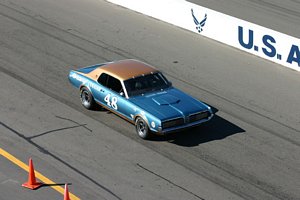 |
1967 2004 Zippo United States Vintage Grand Prix Driven by Scott Hackenson Photo by Nathan Bittinger View photo of 1967 Mercury Cougar Vintage Racing - 257KB  This work is licensed under a Creative Commons Attribution 2.0 License. |
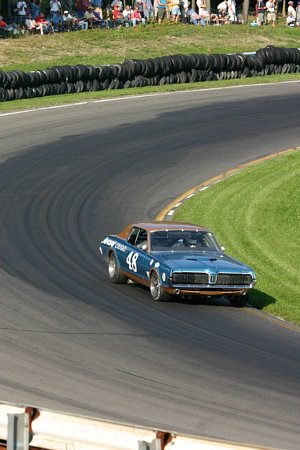 |
1967 Photo by Nathan Bittinger #48 - 1967 Mercury Cougar (292cid) 2004 Zippo United States Vintage Grand Prix
 This work is licensed under a Creative Commons Attribution 2.0 License. |
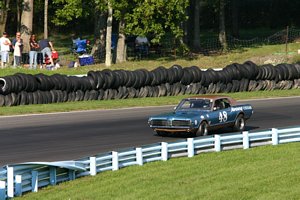 |
1967 Photo by Nathan Bittinger #48 - 1967 Mercury Cougar (292cid) 2004 Zippo United States Vintage Grand Prix
 This work is licensed under a Creative Commons Attribution 2.0 License. |
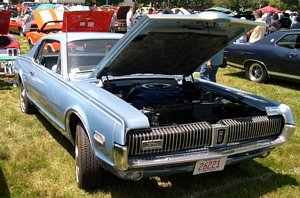 |
1968 Photo by Stephen Foskett Bay State Antique Automobile Club show, Endicott Estate in Dedham, Massachusetts July 10, 2005 View photo of 1968 Mercury Cougar - 187KB Permission is granted to copy, distribute and/or modify this document under the terms of the GNU Free Documentation License, Version 1.2 or any later version published by the Free Software Foundation; with no Invariant Sections, no Front-Cover Texts, and no Back-Cover Texts. A copy of the license is included in the section entitled "GNU Free Documentation License". |
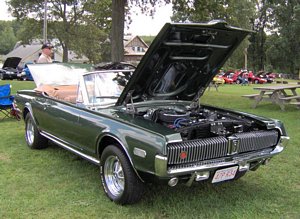 |
1968 Photo by Stephen Foskett 28th Annual New England Regional All-Ford Show and Swap Meet hosted by the Mustang Car Club of New England at the Hebert Candy Mansion, Shrewsbury, MA August 26, 2006 View photo of 1968 Mercury Cougar - 235KB Permission is granted to copy, distribute and/or modify this document under the terms of the GNU Free Documentation License, Version 1.2 or any later version published by the Free Software Foundation; with no Invariant Sections, no Front-Cover Texts, and no Back-Cover Texts. A copy of the license is included in the section entitled "GNU Free Documentation License". |
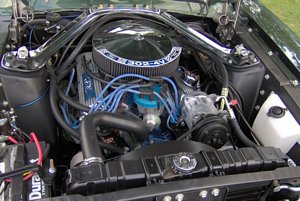 |
1968 302-4V Windsor Photo by Stephen Foskett 28th Annual New England Regional All-Ford Show and Swap Meet hosted by the Mustang Car Club of New England at the Hebert Candy Mansion, Shrewsbury, MA August 26, 2006 View photo of 1968 Mercury Cougar 302-4V Windsor Engine - 187KB Permission is granted to copy, distribute and/or modify this document under the terms of the GNU Free Documentation License, Version 1.2 or any later version published by the Free Software Foundation; with no Invariant Sections, no Front-Cover Texts, and no Back-Cover Texts. A copy of the license is included in the section entitled "GNU Free Documentation License". |
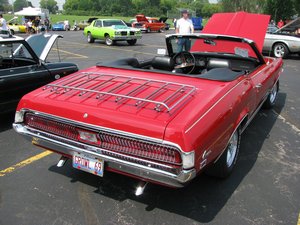 |
1969 Photo ©2008 Bill Crittenden Spring Grove Charity Car Show Spring Grove, Illinois July 27, 2008 View photo of 1969 Mercury Cougar - 4,103KB |
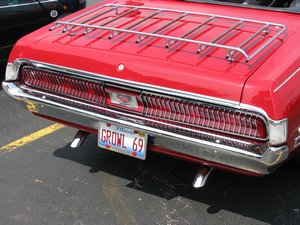 |
1969 Photo ©2008 Bill Crittenden Spring Grove Charity Car Show Spring Grove, Illinois July 27, 2008 View photo of 1969 Mercury Cougar - 3,989KB |
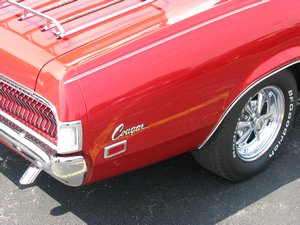 |
1969 Photo ©2008 Bill Crittenden Spring Grove Charity Car Show Spring Grove, Illinois July 27, 2008 View photo of 1969 Mercury Cougar - 3,541KB |
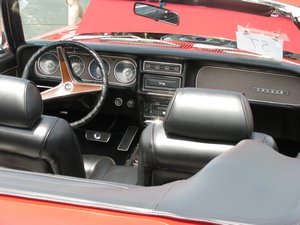 |
1969 Photo ©2008 Bill Crittenden Spring Grove Charity Car Show Spring Grove, Illinois July 27, 2008 View photo of 1969 Mercury Cougar - 3,135KB |
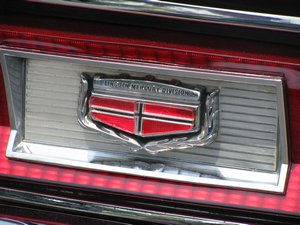 |
1969 Photo ©2008 Bill Crittenden Spring Grove Charity Car Show Spring Grove, Illinois July 27, 2008 View photo of 1969 Mercury Cougar - 3,740KB |
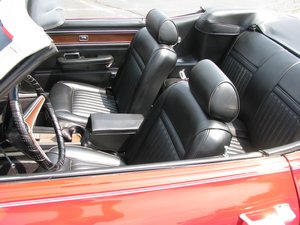 |
1969 Photo ©2008 Bill Crittenden Spring Grove Charity Car Show Spring Grove, Illinois July 27, 2008 View photo of 1969 Mercury Cougar - 3,277KB |
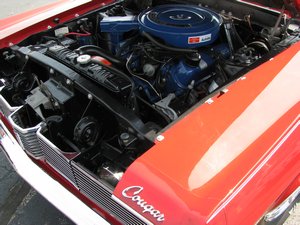 |
1969 Photo ©2008 Bill Crittenden Spring Grove Charity Car Show Spring Grove, Illinois July 27, 2008 View photo of 1969 Mercury Cougar - 3,258KB |
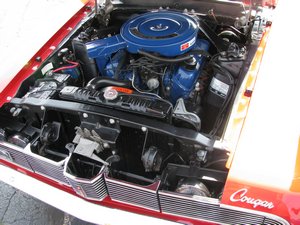 |
1969 Photo ©2008 Bill Crittenden Spring Grove Charity Car Show Spring Grove, Illinois July 27, 2008 View photo of 1969 Mercury Cougar - 3,252KB |
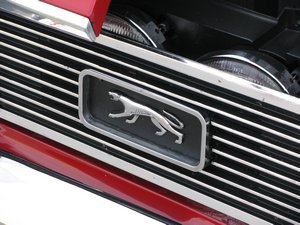 |
1969 Photo ©2008 Bill Crittenden Spring Grove Charity Car Show Spring Grove, Illinois July 27, 2008 View photo of 1969 Mercury Cougar - 3,268KB |
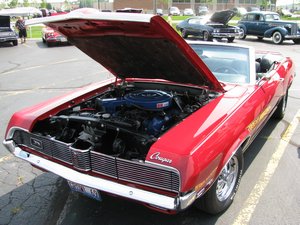 |
1969 Photo ©2008 Bill Crittenden Spring Grove Charity Car Show Spring Grove, Illinois July 27, 2008 View photo of 1969 Mercury Cougar - 3,894KB |
1970 XR-7 for $28,000 for $28,0002013 Mecum Chicago Auction Photo ©2013 Bill Crittenden View photo of 1970 Mercury Cougar XR-7 - 3.2MB | |
1970 XR-7 for $28,000 for $28,0002013 Mecum Chicago Auction Photo ©2013 Bill Crittenden View photo of 1970 Mercury Cougar XR-7 - 4.4MB | |
1970 XR-7 for $28,000 for $28,0002013 Mecum Chicago Auction Photo ©2013 Bill Crittenden View photo of 1970 Mercury Cougar XR-7 - 4.1MB | |
| 1971 Cougar XR-7 Photo ©2015 Bill Crittenden Green Street Cruise Night: May 18, 2015 View photo of 1971 Mercury Cougar XR-7 - 3.4MB | |
| 1971 Cougar XR-7 Photo ©2015 Bill Crittenden Green Street Cruise Night: May 18, 2015 View photo of 1971 Mercury Cougar XR-7 - 3.8MB | |
| 1971 Cougar XR-7 Photo ©2015 Bill Crittenden Green Street Cruise Night: May 18, 2015 View photo of 1971 Mercury Cougar XR-7 - 2.9MB | |
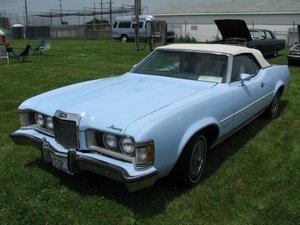 |
1973 Photo ©2009 Bill Crittenden 2009 Pop's Productions Father's Day Car Show and Swap June 21, 2009 View photo of 1973 Mercury Cougar - 3,747KB |
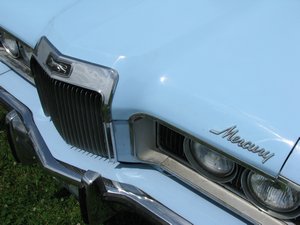 |
1973 Photo ©2009 Bill Crittenden 2009 Pop's Productions Father's Day Car Show and Swap June 21, 2009 View photo of 1973 Mercury Cougar - 3,022KB |
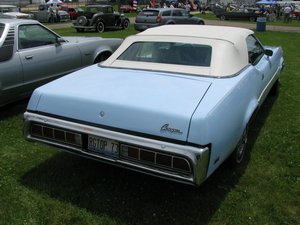 |
1973 Photo ©2009 Bill Crittenden 2009 Pop's Productions Father's Day Car Show and Swap June 21, 2009 View photo of 1973 Mercury Cougar - 3,331KB |
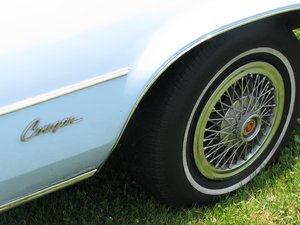 |
1973 Photo ©2009 Bill Crittenden 2009 Pop's Productions Father's Day Car Show and Swap June 21, 2009 View photo of 1973 Mercury Cougar - 2,782KB |
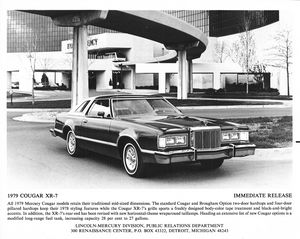 |
1979 XR-7 Lincoln-Mercury Public Relations Photograph All 1979 Mercury Cougar models retain their traditional mid-sized dimensions. The standard Cougar and Brougham Option two-door hardtops and four-door pillared hardtops keep their 1978 styling features while the Cougar XR-7's grille sports a freshly designed body-color tape treatment and black-and-bright accents. In addition, the XR-7's rear end has been revised with new horizontal-theme wraparound taillamps. Heading an extensive list of new Cougar options is a modified long-range fuel tank, increasing capacity 28 per cent to 27 gallons. View photo of 1979 Mercury Cougar XR-7 - 3.2MB |
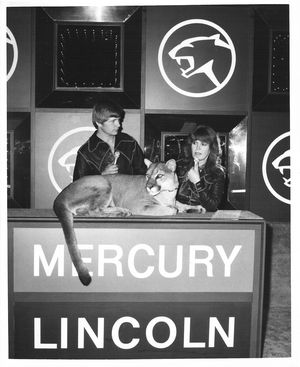 |
1979 - Christopher the Cougar Lincoln-Mercury Public Relations Photograph Christopher, along with trainers Pat Derby and Ed Stewart, returns to McCormick Place at the Lincoln-Mercury exhibit for the 1979 Chicago Auto Show, February 24 through March 4. TGhe full-grown cougar appears in Lincoln-Mercury advertisements. Derby and Stewart also will bring Rick-O-Shay, a bobcat. They will appear weekends at noon, 1:15, 5:30, 6:30 and 9:15; and Monday through Friday at 1 o'clock, 3, 6, 7:30 and 9:15. Febraury 8, 1979 View photo of 1979 Mercury Cougar - Christopher the Cougar - 3.5MB |
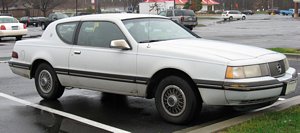 |
Photo by IFCAR January 1, 2007 View photo of Mercury Cougar - 259KB |
 |
Photo by IFCAR January 1, 2007 View photo of Mercury Cougar - 178KB |
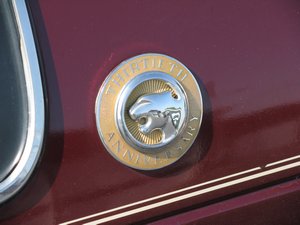 |
Thirtieth Anniversary Photo ©2008 Bill Crittenden  2008 Summer NNL August 3, 2008 View photo of Mercury Cougar Thirtieth (30th) Anniversary - 3,316KB |
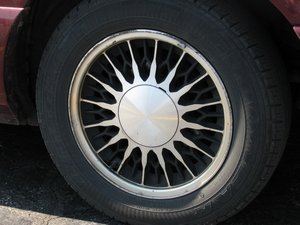 |
Thirtieth Anniversary Photo ©2008 Bill Crittenden  2008 Summer NNL August 3, 2008 View photo of Mercury Cougar Thirtieth (30th) Anniversary - 2,927KB |
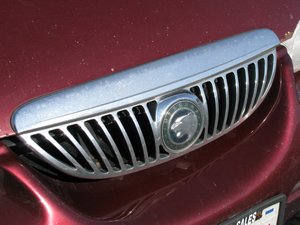 |
Thirtieth Anniversary Photo ©2008 Bill Crittenden  2008 Summer NNL August 3, 2008 View photo of Mercury Cougar Thirtieth (30th) Anniversary - 3,213KB |
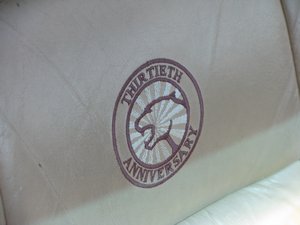 |
Thirtieth Anniversary Photo ©2008 Bill Crittenden  2008 Summer NNL August 3, 2008 View photo of Mercury Cougar Thirtieth (30th) Anniversary - 3,407KB |
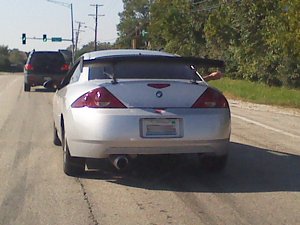 |
w/Aftermarket Wing Photo ©2010 Bill Crittenden September 17, 2010 View photo of Mercury Cougar - 230KB |
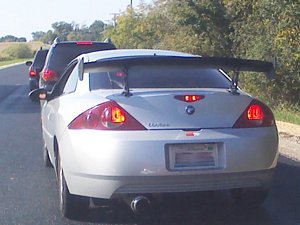 |
w/Aftermarket Wing Photo ©2010 Bill Crittenden September 17, 2010 View photo of Mercury Cougar - 233KB |
| Type & Item # | Name | Details |
|---|---|---|
| Die Cast - Hot Wheels 52935-0910 | 1968 Mercury Cougar | 2002 First Editions, small scale, lime green w/black roof |
| Die Cast - Hot Wheels J3478-0916 | 1968 Mercury Cougar | small scale, green w/black roof |
| Die Cast - Hot Wheels J3478-0917C | 1968 Mercury Cougar | small scale, orange w/black roof |
| Die Cast - Hot Wheels N4011-A919E | '69 Mercury Cougar Eliminator | 2009 New Models, small scale, dark orange |
| Die Cast - American Muscle 33726 | 1969 Cougar Eliminator | Elite Edition, 1:18 scale, blue, production: 5,000 |
| Model Kit - AMT 6533 | '69 Cougar XR-7 | Street Machines, 1:25 scale |
| Model Kit - Revell 7185 | 1990 Cougar XR-7 | 1:25 scale, "Production" Version |
| Model Kit - Revell 85-2182 | '92 Cougar XR-7 Lowrider 3 'n 1 | 1:25 scale |
| Date | Article | Author/Source |
|---|---|---|
| 16 February 2006 | Retro Rides, Part 4 The last installment of the Retro Rides series are some of my personal ideas for making retro cars using modern platforms and components, the same way most automakers do it to reduce costs. | Commentary (text) Publisher: CarsAndRacingStuff.com Byline: Bill Crittenden |
| 10 May 2014 | Dream Cars: 2010 & 2015 Mercury Cougar, and a Return of Mercury | Bill Crittenden |
| 19 March 2016 | Reference Desk: 1973 Mercury Cougar | Bill Crittenden |
